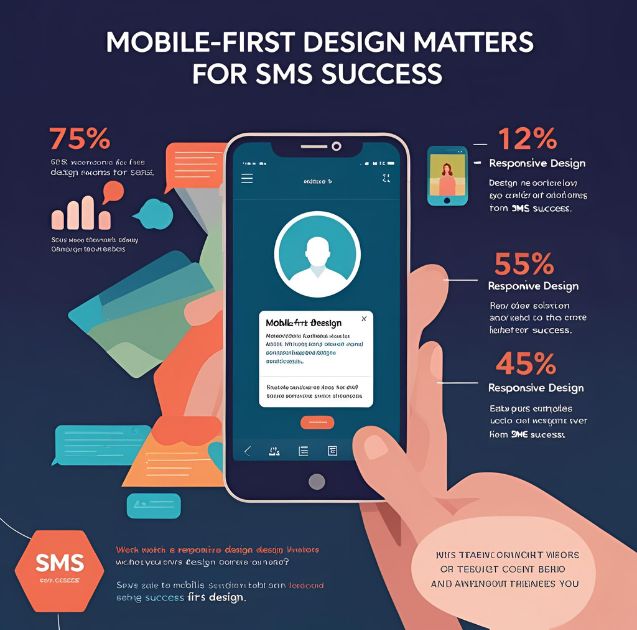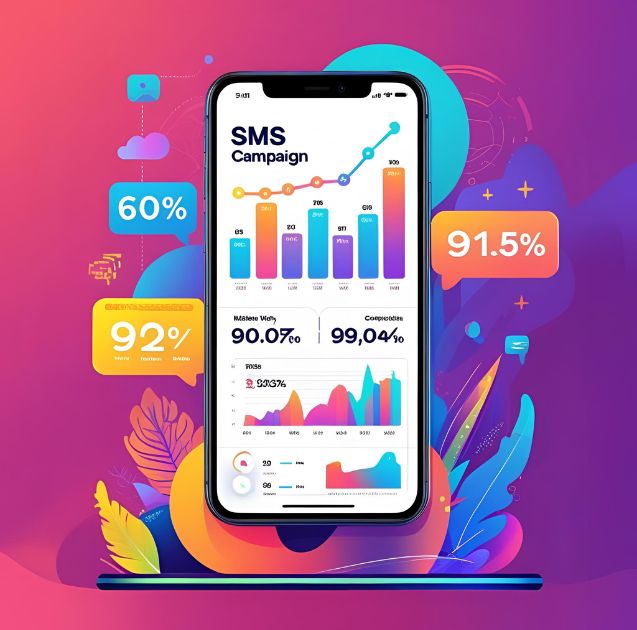SMS marketing drives impressive results—but only when paired with seamless mobile experiences. While text messages achieve open rates of up to 98%, sending users to poorly optimized websites can destroy conversion potential within seconds.
The connection between SMS campaigns and responsive web design runs deeper than most marketers realize. When someone clicks a link from their phone, they expect instant loading and effortless navigation. A website that forces pinching, zooming, or horizontal scrolling will send potential customers straight to your competitors.
This post explores how responsive web design transforms SMS campaigns from simple text broadcasts into powerful conversion engines. You’ll discover specific design principles that maximize mobile engagement and learn practical strategies for creating cohesive experiences across all devices.
Why Mobile-First Design Matters for SMS Success

SMS campaigns primarily reach users on mobile devices. Research shows that 75% of text message recipients read messages within three minutes of receiving them—almost always on their smartphones. This immediacy creates unique opportunities but also sets sky-high expectations for user experience.
When recipients tap links in SMS messages, they’re already in a mobile mindset. They want quick answers, easy navigation, and fast-loading content. Responsive design ensures your website adapts perfectly to their device, maintaining the momentum created by your text message.
Mobile-first design approaches this challenge by prioritizing smartphone experiences during the development process. Rather than shrinking desktop layouts to fit smaller screens, mobile-first design builds upward from phone-sized interfaces. This strategy creates cleaner, faster, and more intuitive experiences for SMS traffic.
Core Elements of SMS-Optimized Responsive Design
Fast Loading Speeds
SMS recipients expect immediate gratification. Studies indicate that 53% of mobile users abandon websites that take longer than three seconds to load. For SMS traffic, this threshold drops even lower since users arrive with specific intent triggered by your message.
Optimize images, minimize HTTP requests, and leverage browser caching to achieve sub-two-second loading times. Consider implementing accelerated mobile pages (AMP) for landing pages frequently linked in SMS campaigns. These streamlined versions load almost instantly and keep user attention focused on your primary conversion goals.
Touch-Friendly Navigation
Smartphone users navigate with thumbs, not cursors. Design elements must accommodate finger-sized interactions rather than precise mouse clicks. Buttons should measure at least 44 pixels in height and width—Apple’s recommended minimum for touch targets.
Spacing between clickable elements prevents accidental taps that frustrate users and derail conversion paths. Create clear visual hierarchies using color, size, and positioning to guide users toward desired actions without overwhelming limited screen space.
Simplified Content Hierarchy
Mobile screens demand ruthless content prioritization. SMS recipients arrive seeking specific information or actions, making lengthy paragraphs and complex layouts counterproductive. Structure content using scannable headings, bullet points, and white space that creates breathing room around important elements.
Single-column layouts work best for mobile devices, eliminating the need for horizontal scrolling or complex navigation patterns. Place critical information and calls-to-action above the fold to capture attention before users scroll or navigate away.
Strategic Landing Page Design for SMS Traffic
Consistent Messaging Alignment
The transition from SMS to website should feel seamless and logical. Landing page headlines should directly relate to your text message content, reinforcing the value proposition that motivated users to click. Disconnected messaging creates confusion and increases bounce rates.
If your SMS promotes a specific product discount, ensure the landing page prominently displays that offer without forcing users to search. Visual consistency in colors, fonts, and styling helps maintain brand recognition across the customer journey.
Streamlined Conversion Paths
SMS traffic often arrives with high purchase intent, making complicated conversion processes particularly damaging. Reduce form fields to essential information only, implement one-click purchasing options when possible, and minimize the number of steps between arrival and conversion.
Consider the specific actions your SMS campaign encourages. Product purchases require different landing page structures than newsletter signups or event registrations. Tailor page layouts to match user expectations and eliminate friction points that could derail conversions.
Device-Specific Optimization
Different smartphones display websites differently, even with responsive design. Test your SMS landing pages across various devices, screen sizes, and operating systems to identify potential issues. Pay particular attention to older smartphones that may struggle with resource-intensive design elements.
Progressive enhancement techniques ensure basic functionality remains intact even when advanced features fail to load properly. This approach protects conversion opportunities regardless of device limitations or network connectivity issues.
Integration Strategies for Maximum Impact
Cross-Channel Consistency
SMS campaigns work best as part of integrated marketing strategies. Ensure responsive design elements align with email templates, social media visuals, and other touchpoints customers encounter. Consistent experiences build trust and reinforce brand recognition across multiple interactions.
Color schemes, typography choices, and call-to-action button styling should remain recognizable whether users arrive from SMS, email, or social media campaigns. This consistency reduces cognitive load and helps users focus on conversion actions rather than figuring out navigation patterns.
Analytics and Testing Framework
Responsive design effectiveness requires continuous measurement and optimization. Track mobile-specific metrics, including bounce rates, time on site, and conversion rates for SMS traffic compared to other sources. These insights reveal design elements that support or hinder campaign performance.
A/B testing different landing page layouts, button placements, and content structures provides data-driven guidance for design improvements. Focus tests on elements directly impacting SMS user experience—loading speeds, form completion rates, and mobile navigation patterns.
Technical Implementation Considerations
Responsive frameworks like Bootstrap or Foundation provide solid starting points for SMS-optimized design. However, avoid loading unnecessary CSS and JavaScript libraries that slow page speeds for mobile users. Custom solutions often deliver better performance than heavyweight frameworks.
Consider implementing progressive web app (PWA) features for frequently visited landing pages. These technologies enable app-like experiences within web browsers, including offline functionality and push notifications that extend SMS campaign reach.
Measuring Success Across Devices
Key Performance Indicators
Track mobile conversion rates, page load speeds, and user engagement metrics specifically for SMS traffic. Compare these numbers to desktop performance and other traffic sources to understand the responsive design’s impact on campaign effectiveness.
Monitor bounce rates by device type to identify potential responsive design issues. High mobile bounce rates often indicate loading problems, navigation difficulties, or content that doesn’t display properly on smaller screens.
Ongoing Optimization Process
Responsive design requires continuous refinement based on user behavior data and technological changes. Regular audits help identify outdated design patterns, slow-loading elements, and navigation issues that emerge as mobile devices evolve.
Stay current with mobile design trends and user interface best practices. What worked for SMS campaigns last year may feel outdated or clunky as user expectations shift and new interaction patterns emerge.
Maximizing Your SMS Campaign Potential

Responsive web design transforms SMS marketing from basic text messaging into comprehensive customer experiences. When mobile-optimized websites support well-crafted SMS campaigns, businesses see higher engagement rates, improved conversions, and stronger customer relationships.
Success requires viewing SMS and web design as interconnected elements rather than separate marketing tactics. Every design decision should consider how mobile users will interact with content after clicking links in text messages.
Start by auditing your current SMS landing pages on multiple mobile devices. Identify loading speed issues, navigation problems, and content hierarchy challenges that might prevent conversions. Then prioritize improvements based on traffic volume and conversion potential for each page.
Remember that responsive design excellence develops through iterative testing and refinement. Begin with fundamental mobile optimization principles, measure results carefully, and continuously enhance user experiences based on real-world performance data.







